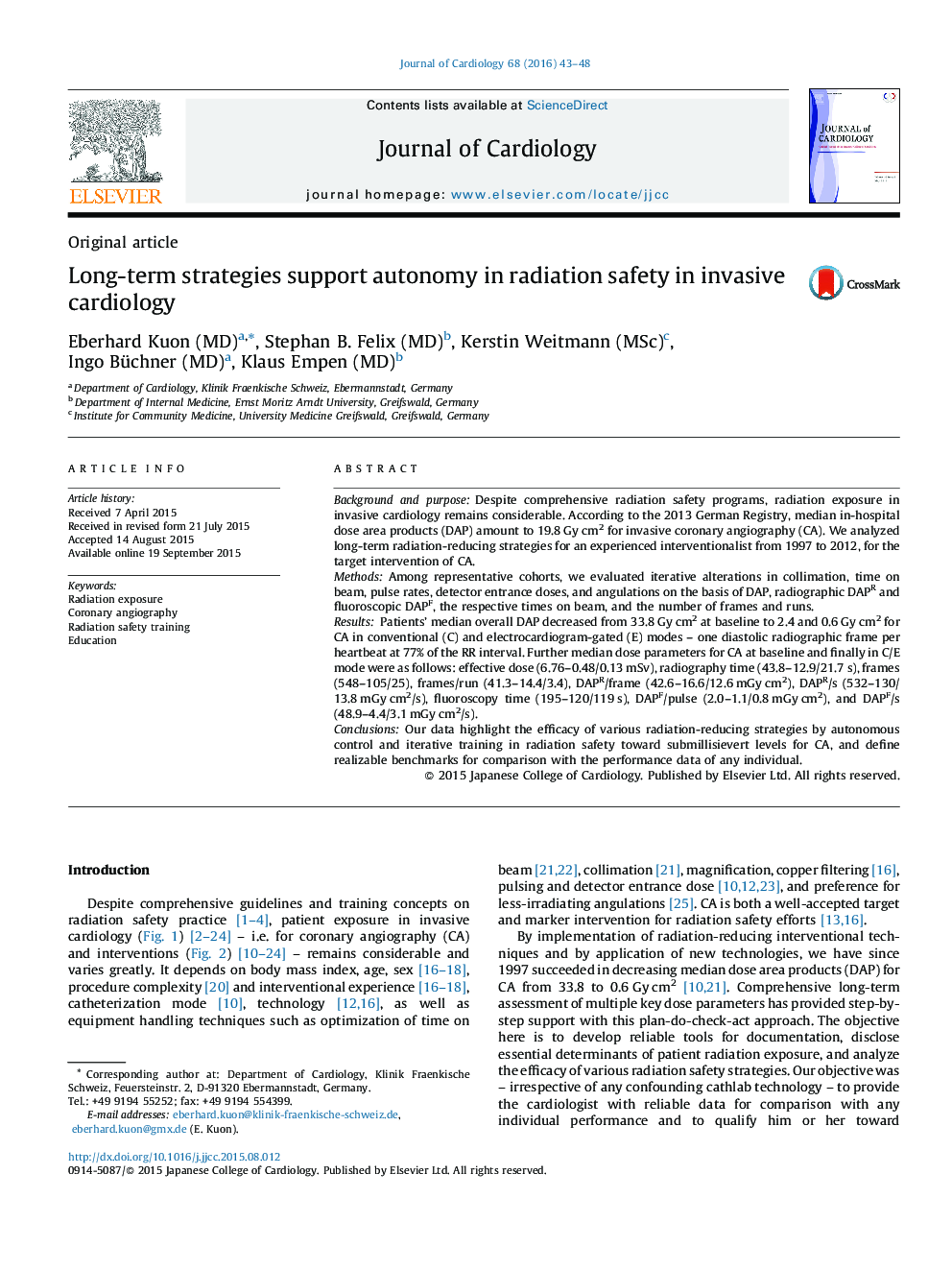| Article ID | Journal | Published Year | Pages | File Type |
|---|---|---|---|---|
| 2962754 | Journal of Cardiology | 2016 | 6 Pages |
Background and purposeDespite comprehensive radiation safety programs, radiation exposure in invasive cardiology remains considerable. According to the 2013 German Registry, median in-hospital dose area products (DAP) amount to 19.8 Gy cm2 for invasive coronary angiography (CA). We analyzed long-term radiation-reducing strategies for an experienced interventionalist from 1997 to 2012, for the target intervention of CA.MethodsAmong representative cohorts, we evaluated iterative alterations in collimation, time on beam, pulse rates, detector entrance doses, and angulations on the basis of DAP, radiographic DAPR and fluoroscopic DAPF, the respective times on beam, and the number of frames and runs.ResultsPatients’ median overall DAP decreased from 33.8 Gy cm2 at baseline to 2.4 and 0.6 Gy cm2 for CA in conventional (C) and electrocardiogram-gated (E) modes – one diastolic radiographic frame per heartbeat at 77% of the RR interval. Further median dose parameters for CA at baseline and finally in C/E mode were as follows: effective dose (6.76–0.48/0.13 mSv), radiography time (43.8–12.9/21.7 s), frames (548–105/25), frames/run (41.3–14.4/3.4), DAPR/frame (42.6–16.6/12.6 mGy cm2), DAPR/s (532–130/13.8 mGy cm2/s), fluoroscopy time (195–120/119 s), DAPF/pulse (2.0–1.1/0.8 mGy cm2), and DAPF/s (48.9–4.4/3.1 mGy cm2/s).ConclusionsOur data highlight the efficacy of various radiation-reducing strategies by autonomous control and iterative training in radiation safety toward submillisievert levels for CA, and define realizable benchmarks for comparison with the performance data of any individual.
